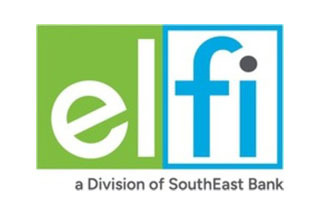Here's the No. 1 Barrier Blocking Parents From Saving More Money for College

Inflation and climbing college costs are stressing out parents who are trying to put away money for their kids’ college education.
A quarter of parents see inflation as the most significant barrier to their ability to save, according to results of a Fidelity Investments study released Thursday. Overall, a whopping 93% say they’re concerned about inflation and rising education costs when it comes to saving for college. And while most parents say they plan to keep their savings rate steady this year, 64% of those who anticipate reducing their contributions blame inflation.
Inflation has been cooling, and average net tuition — or the amount families pay colleges after financial aid — has actually dropped slightly in recent years. But neither of those positive developments are enough to reverse decades of increasing prices that have made college feel financially out of reach to many Americans.
For the upcoming school year, the average in-state net price for tuition, fees, housing and food at public four-year colleges tops $15,000, according to the College Board. For students at private colleges, the average net price for a year jumps to $30,560. At public colleges, that's about 70% more than 20 years ago, before adjusting for inflation; at private colleges, it's nearly 60% more.
“While parents prioritize their children’s college education, the reality is that balancing day-to-day expenses with long-term savings can be daunting,” Tony Durkan, a vice president at Fidelity, said in a news release.
On the bright side, more parents are stashing away money for college. Seventy-four percent of parents say they're saving for college in this year’s survey, compared to 58% in 2007, when the study was first conducted.
New advantages to 529 college savings plans
College tops parents' saving priorities, coming in ahead of both saving for retirement and building up an emergency fund. While helping pay for college has long been a financial goal for parents, the increasing reliance on student loans today is a major motivator. More than 70% of parents named student debt as a factor in why they're saving for college.
Parents report having lofty savings goals, too, saying they ultimately hope to pay for two-thirds of their child’s education. And yet, Fidelity finds that families are on track to cover just 30% of expected college costs.
Parents’ readiness for paying for college is related to how they’re saving, according to the survey. Parents using a 529 college savings plan have a median of $25,000 set aside compared to $14,000 for those without a 529 account. The first group is also on track to meet 46% of their college savings goals, while the latter is on track to cover just 20% of their goal.
In general, financial planners like 529 plans because they offer higher long-term returns than a traditional savings account and tax-free earnings when used for a growing list of approved educational expenses.
But new legislation makes them more flexible. As of this year, assets in a 529 plan can be transferred to a Roth IRA (individual retirement account) for the beneficiary if they meet certain criteria. In other words: Parents don’t have to worry about paying a penalty if their child ends up not attending college or not needing the money in a 529 for higher education. Instead, the account can give their kid a jumpstart on their retirement savings.
In the Fidelity survey, about two-thirds of parents reported they weren’t aware of the new 529 rules, though after learning about it, many parents reported they’d consider using the feature. Plus, 36% of respondents say they’re more interested in putting more money in a 529 account given the new rule.
Setting up regular contributions to a 529 plan, even when small, can help you reach your savings goals. For example, Fidelity calculates that contributing $50 a month to a 529 plan for five years will add $3,350 to your coffers. If you can swing $150 a month for five years, that will add up to more than $10,000 for college.
And as always, the earlier you start saving, the longer your money has to grow. Contributing $50 a month for 15 years adds up to $12,800 — or enough to cover a year’s worth of in-state tuition and fees at public colleges in 35 states.
The Fidelity study is based on a survey of 1,985 families nationwide with household incomes of at least $30,000 and children aged 18 and younger who are expected to attend college.
More from Money:
10 Strategies Parents Are Using to Pay for Their Kids' College
Only 1 in 5 People Think College Is Worth the Money if You Need Student Loans






